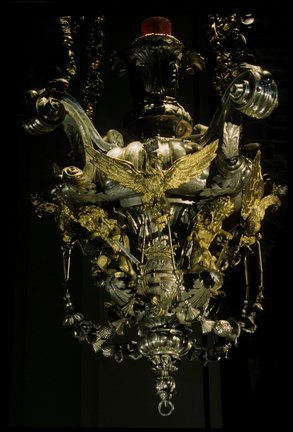Cappella maggiore
Le linee architettoniche dell’abside centrale realizzano il progetto rinascimentale che iniziò proprio da quest’abside, costruita nel corso di tutto il Cinquecento, prima delle due identiche absidi laterali all’estremità del transetto, erette nel secolo seguente. Nel 1510 il vescovo ottenne il permesso dal duca di Milano per la costruzione. Il progetto fu affidato a Tommaso Rodari. Alla cerimonia di fondazione era presente Giovanni Antonio Amadeo ingegnere ducale e maestro del Rodari. Si attese fino al 1519 per l’inizio della costruzione. Il progetto di Tommaso Rodari fu corretto in senso decisamente rinascimentale con richiami all’architettura romana da Cristoforo Solari detto il Gobbo. La costruzione durò dal 1519 al 1596 quando fu costruita la volta da Giovanni Antonio Piotti detto il Vacallo. La decorazione a stucco della volta fu affidata a Giuseppe Bianchi e Domenico Fontana. Nel 1599 si demoliva l’antica abside contenuta all’interno della nuova.
Nasceva così la nuova Cappella Maggiore che ospita il presbiterio con l’altare maggiore, l’ambone, la cattedra del vescovo e il retrostante coro dei canonici.
La Colomba simbolo dello Spirito Santo che vivifica la Chiesa sovrasta questo spazio dall’alto della volta.
L’altare della celebrazione eucaristica è quello dell’antica e precedente cattedrale: datato 1317 , offerto dall’arcidiacono Valeriano Rusca e consacrato dal vescovo Leone Lambertenghi; è opera di un maestro campionese che ha rappresentato a lato della Crocifissione le due sante monache Liberata e Faustina, delle quali l’altare conserva le reliquie. Sui fianchi stanno due coppie di santi di dubbia identificazione. Dietro una lastra postavi nel 1986 quando il vescovo Teresio Ferraroni volle riutilizzare questo altare-sarcofago come mensa rivolta al popolo. Facevano parte di questo altare il rilievo della Madonna col Bambino riutilizzato nell’ambone (arch. Gaetano Banfi 1986) e le due epigrafi che sono murate dietro il retrostante altare barocco del 1728 dentro il quale tutte le lastre del 1317 furono riposte come reliquie. L’altare nuovo in marmi pregiati , onice e bronzi dorati fu ideato dal padre teatino Zacarolo, disegnato a Urbino per il vescovo Giuseppe Olgiati, realizzato a Roma e fatto pervenire a Como con un percorso iniziato via mare fino a Genova Fu consacrato il 30 ottobre 1729. Lo completano i candelabri, i busti d’argento dei Padri e la croce. Le spese furono coperte vendendo argenterie e stoffe della sacrestia.
Nella cattedra episcopale è stato reimpiegato un rilievo del 1283 con il vescovo s. Abbondio.
Gli stalli del coro sono opera degli intagliatori Lucini di Cagno (1620).
Le nicchie dell’abside ospitano 14 statue neoclassiche, Gesù, Maria e gli Apostoli, scolpite da Pompeo Marchesi tra 1815 e 1816.
La vetrata centrale raffigura l’Ultima Cena (1860). Le altre finestre rappresentano da sinistra a destra, la Natività, il Battesimo di Cristo, il Discorso della montagna, la Trasfigurazione, opere della bottega Bertini tra 1863 e 1878, riparate nel 1950.
All’ingresso della cappella pende dall’alto una grandiosa lampada d’argento dono del marchese Giacomo Gallio, opera dell’orafo Amos Somigliana (1698).








